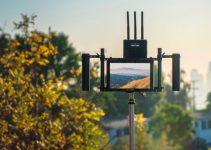Sony is not wasting any time and just announced two new 4K cameras – the successor to the very popular a6300 is called the Sony a6500 and is the new flagship APS-C 4K interchangeable lens camera for the company. The other new camera is the “pocket rocket” that is the new Sony RX100 V! First let’s talk about the new α6500 – it features a 24.2 megapixel Exmor CMOS sensor with that awesome BIONZ X image processor plus a newly developed front-end LSI to maximize processing power and achieve an impressive sensitivity range of ISO 100-51,200. 4K UHD *3840 x 2160 recording up to 30p in a Super 35 crop, as well as 1080/120fps super slow-mo are also available, much like on the predecessor model A6300, however this time around Sony have implemented a 5-axis in-camera image stabilisation and a touch-screen functionality on the back LCD screen, while still retaining the use of the EVF! These two new features alone may be enough to not only sway existing a6300 owners to upgrade, but also those new to the Sony APS-C mirrorless system.
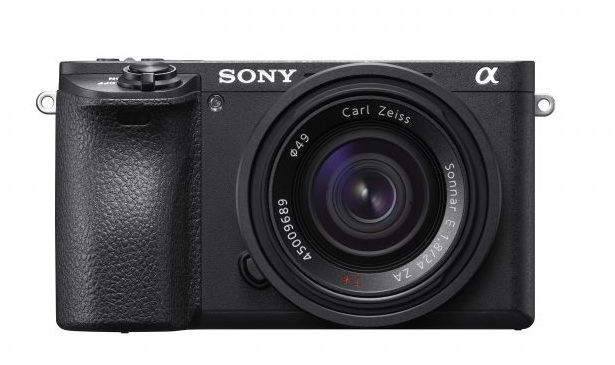
Sony a6500 Quick Features at a Glance
- 24.2MP APS-C Exmor CMOS Sensor w front-end SLI
- BIONZ X Image Processor
- 4K UHD/30p in XAVC-S 100Mb/s 8bit 4:2:0 internal
- 1080p/120fps plus NEW S&Q for 1-120fps Slow-Motion!
- XGA Tru-Finder 2.36m-Dot OLED EVF
- 3.0″ 921.6k-Dot Tilting Touchscreen LCD
- S-Log2/ S-Gamut3.Cine/S-Log-3 and S-Gamut3/S-Log3
- 5-Axis SteadyShot INSIDE Stabilization
- Built-In Wi-Fi with NFC
- 4D FOCUS with 425 Phase-Detect Points
- Records onto a single SDXC card
- 3.5mm Audio mic input
- No headphone input
- Micro HDMI out – UHD 8bit 4:2:2 to external recorders
- Up to 11 fps Shooting and ISO 51,200
- US Price – $1,399
- EU Price – 1,700 Euro
- UK Price – N/A
The image sensor employs a thin wiring layer and large photodiode substrate that maximizes light collection efficiency, plus copper wiring in its structure for outstanding read-out speed. The BIONZ X image processor and newly developed front-end LSI ensure superior image and video quality with low noise even when using higher ISO settings, in particular those at high sensitivity values where other cameras typically struggle. The LSI is also responsible for the expanded buffer depth for continuous shooting.
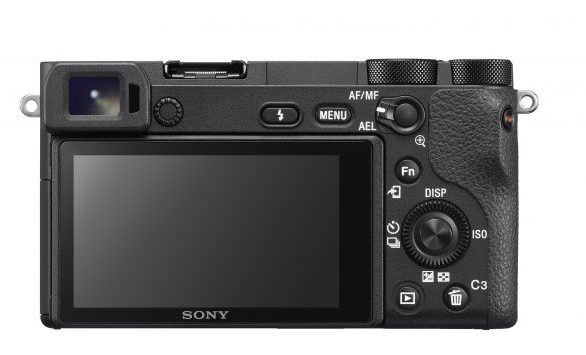
We are continuing to push the boundaries of modern innovation in digital imaging, in particular within the mirrorless space,” said Neal Manowitz, Vice President of Digital Imaging at Sony Electronics. “By equipping the α6500 with 5-axis image stabilization and touchscreen AF, we’re offering photographers and videographers more control than ever before and a seemingly endless amount of creative possibilities. As our flagship APS-C camera, it far exceeds the performance threshold of any camera in its class, and many above its class as well.”
Much like on the a6300, the awesome 4D FOCUS system or “Fast Hybrid AF system” is also present on the new a6500. The system combines high-speed phase detection AF with extremely accurate contrast AF and allows it to capture and lock on to moving subjects in as little as 0.05 seconds. It also features 425 phase detection AF points and High-density Tracking AF Technology, which significantly improves subject detection and tracking performance.
Here’s the first official video sample of the 4K video capabilities of the new Sony a6500. Sadly, the video is uploaded in 1080p 🙁 but at least it’s better than nothing.
Much like the a6300, the successor a6500 downsamples the UHD video from a near 6K (6000 x 3376) resolution, using a 2.4x oversampling to render greater detail thanks to a full pixel readout without the dreaded pixel binning for higher quality imagery with reduced moiré and aliasing.
The built-in 5-axis image stabilisation is also a huge deal especially for handheld shooters, something that A7rII and A7sII users have been enjoying to various degrees. The a6300 was also pretty dreadful when it comes to rolling shutter artefacts, so maybe the in-body image stabilisation may help improve that. In any case, overheating was a huge issue on the predecessor and I certainly hope they’ve fixed that on the new a6500.
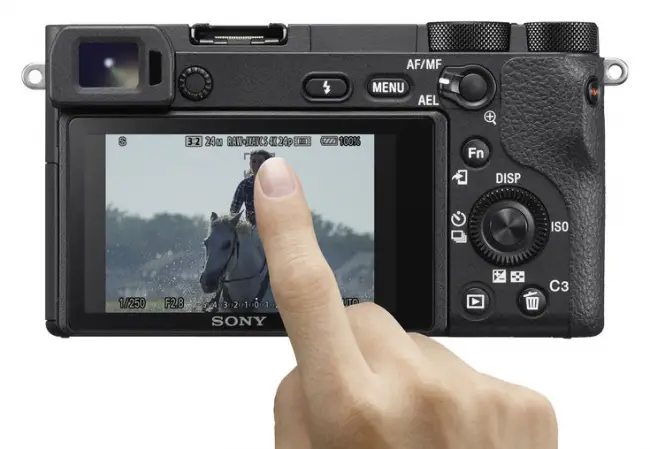
The Sony α6500 also features a new ‘Slow and Quick’ (S&Q) mode that supports both slow motion and quick motion. In this mode, frame rates from 1 fps to 120 fps can be selected in 8 steps for up to 60x quick motion and 5x slow motion recording. Footage shot in this mode can be previewed in camera in slow-mo.
The other big new feature of course here is the AF touch screen functionality, allowing users to lock focus on a subject simply by touching it on the screen. Additionally, in a first for Sony cameras, the α6500 features touchpad functionality. When utilizing the viewfinder for framing and shooting, the LCD screen can be used as a touch pad. Simply drag a finger across the screen to shift the focus point from one area to another – sounds frigging awesome to me. I am pre-ordering one for sure (despite the fact it doesn’t have a headphone jack, my Zoom H6 does, and I am doing dual sound anyway).
B&H have it listed for $1399 with pre-orders starting this Monday Oct.10th at 11 AM Eastern time. Delivery is expected for November in the US, and December in Europe, where the price is 1700 Euros. No word on official UK price yet, I am guessing will be on par with US, or around 1,299 GBP hopefully (*not confirmed). In either case, we’ll get the short end of the stick in the UK as usual. I am pre-ordering mine from B&H anyway.
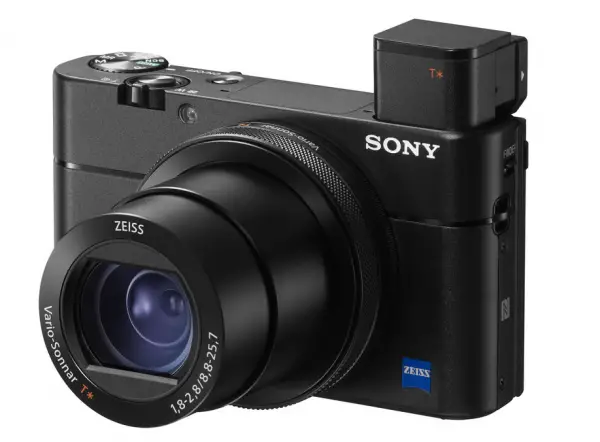
Sony also updated their compact RX range with the new RX100 V, which unlike the A6500 is a fixed lens camera with a 1-inch 20 megapixel back illuminated sensor, built in pop-up EVF and a 24-70mm 35mm equivalent f1.8-2.8 Zeiss lens. The RX100 V also gets the front-end SLI for faster performance and a Fast Hybrid AF system that combines the respective advantages of focal-plane phase detection AF and contrast detection AF and ultimately enables the camera to lock focus in as little as 0.05 seconds.
The new RX100 V features 315 dedicated AF points that cover 65% of the sensor, and ensures that shooters will be able to capture their intended subject with high speed and accuracy, even if it’s moving rapidly in unpredictable directions. Additionally, processing speed has been greatly enhanced through the addition of a front-end LSI that perfectly supports the camera’s BIONZ X image processing engine.
The RX100 V can shoot continuously at speeds of up to 24 fps at full 20.1 MP (approx. effective) resolution for up to 150 shots with AF/AE tracking.
Other advancements to AF performance on the new RX100 V include the addition of AF-A mode, which allows the camera to automatically switch between continuous and single-shot AF modes. Users can also manually select if they’d like the continuous AF and phase detection AF areas to be displayed live on screen while they are framing a shot.
On the video front you get the same frame rates and resolutions as the predecessor Sony RX100 IV – the V can do 4K UHD up to 30p up to 5 minutes continuous in XAVC-S 100Mbps 8bit 420 flavour. Super-slow burst modes in usable resolutions up to 240fps are possible.
The new Sony Cyber-shot RX100 V is estimated to start shipping later in October for about $1,000 US and $1,250 in Canada.
Disclaimer: As an Amazon Associate partner and participant in B&H and Adorama Affiliate programmes, we earn a small comission from each purchase made through the affiliate links listed above at no additional cost to you.


